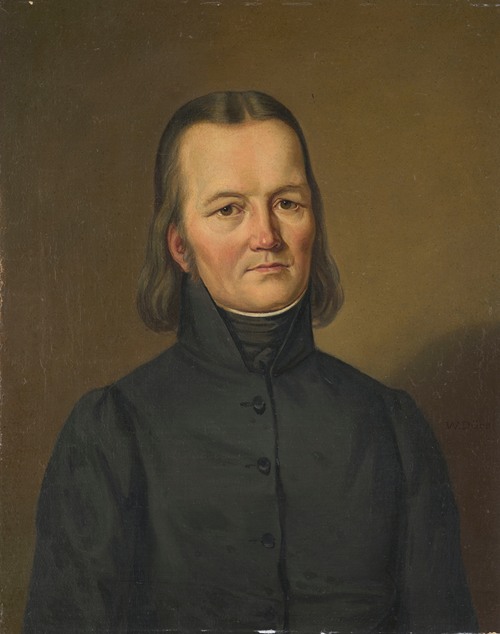
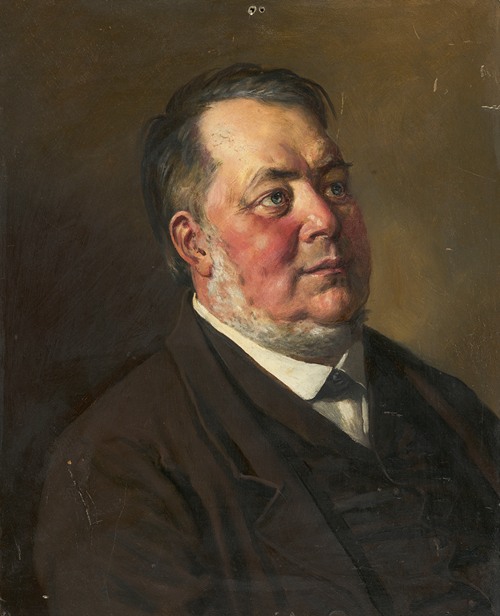
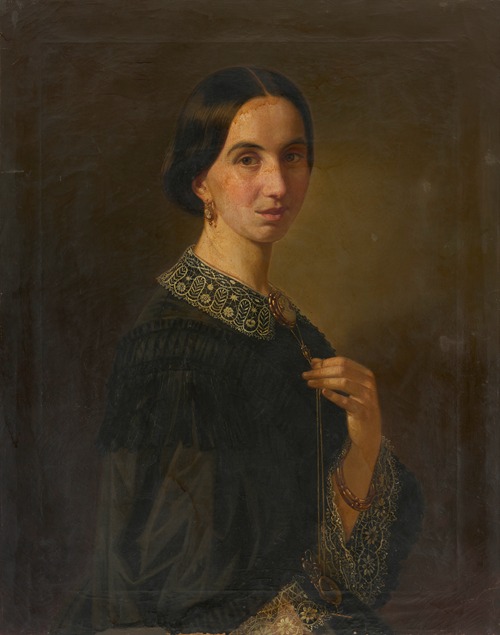
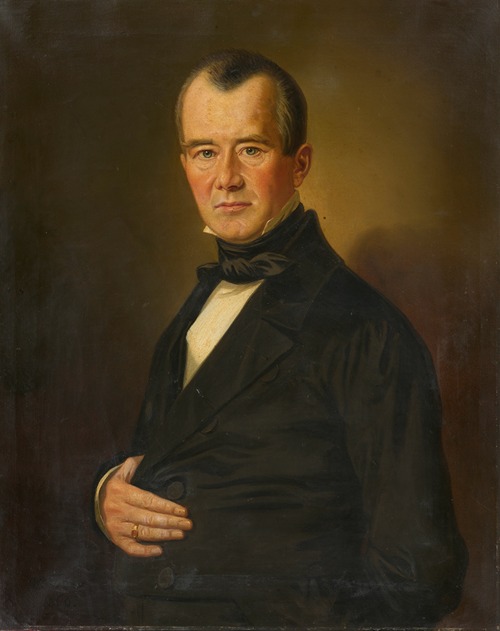

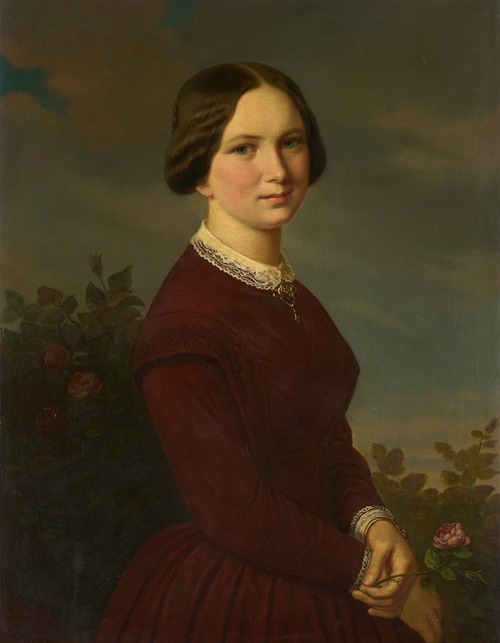
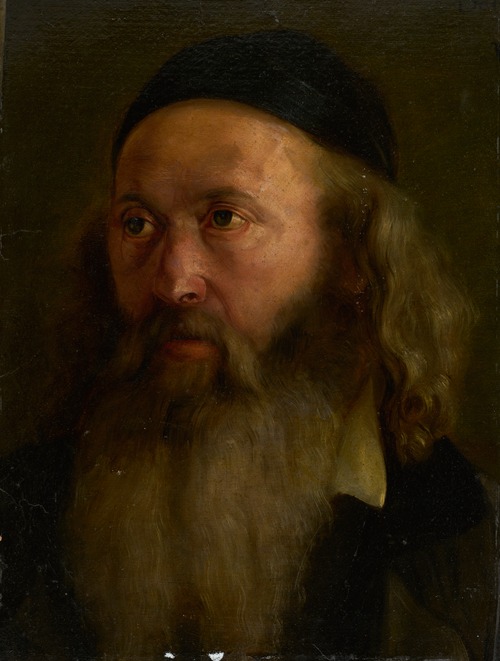
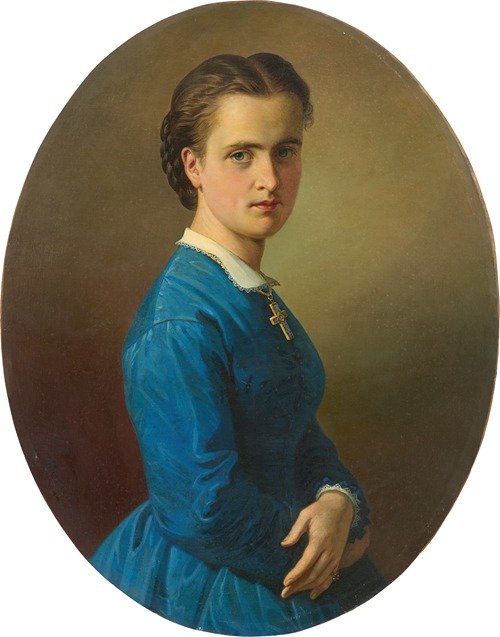
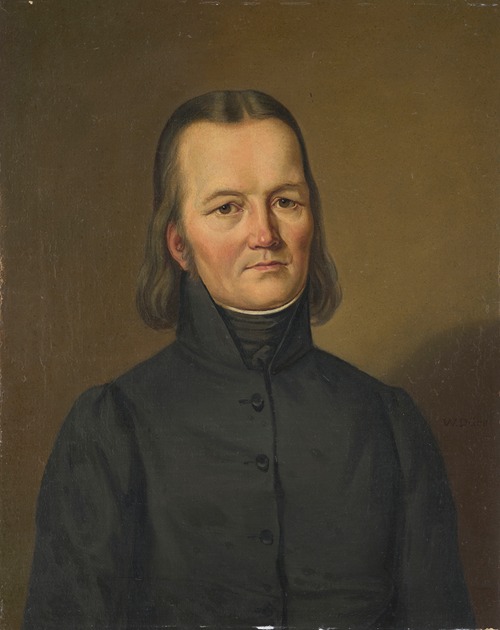

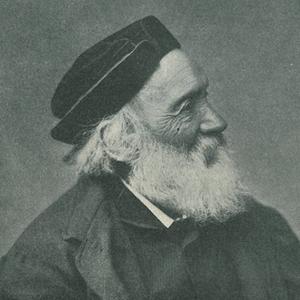

Wilhelm Dürr was a German painter.
At the instigation of his father Fidelis Dürr, music teacher and choirmaster at Villingen Minster, he attended the Academy of Fine Arts in Vienna in 1830. There he initially learned genre painting. His role models were Josef Danhauser, Johann Matthias Ranftl and Peter Fendi. He then worked in the studio of Leopold Kupelwieser, where he became enthusiastic about history painting and turned to the Nazarenes. He visited Rome twice; first for two months in 1839, then in 1840, after visiting Venice and Bologna, he stayed in Rome until 1842, where he joined the group around Ernst Deger, Franz Ittenbach, Andreas and Karl Müller, who had painted the Apollinariskirche in Remagen together. One special encounter was with the painter Carl Rahl, who is said to have saved his life while bathing in Lake Nemi.
Following an illness, he returned to Baden in 1843 and took up residence in Freiburg, where he married Berta Gruny in 1844. In 1847, he was one of the founding members of the Freiburg artists' society Ponte Molle.
He subsequently received commissions for numerous altarpieces in churches in Baden and Alsace. In 1852 he was appointed court painter. In addition to portraits of the royal court, he also produced engravings, for example for Johann Peter Hebel's Alemannic Poems.
In 1874, he was awarded the Knight's Cross I Class of the Order of the Lion of Zähringen. In 1887, he moved to Munich to live with his son Wilhelm (* August 24, 1857; † February 23, 1900), who was also active as an artist, and died there in 1890. His grave is located in the Old Northern Cemetery.
Large parts of his graphic estate and more than 30 paintings are in the Augustinermuseum in Freiburg. The Franciscan Museum in Villingen-Schwenningen owns further works. A street in the Waldsee district of Freiburg is named after him.









